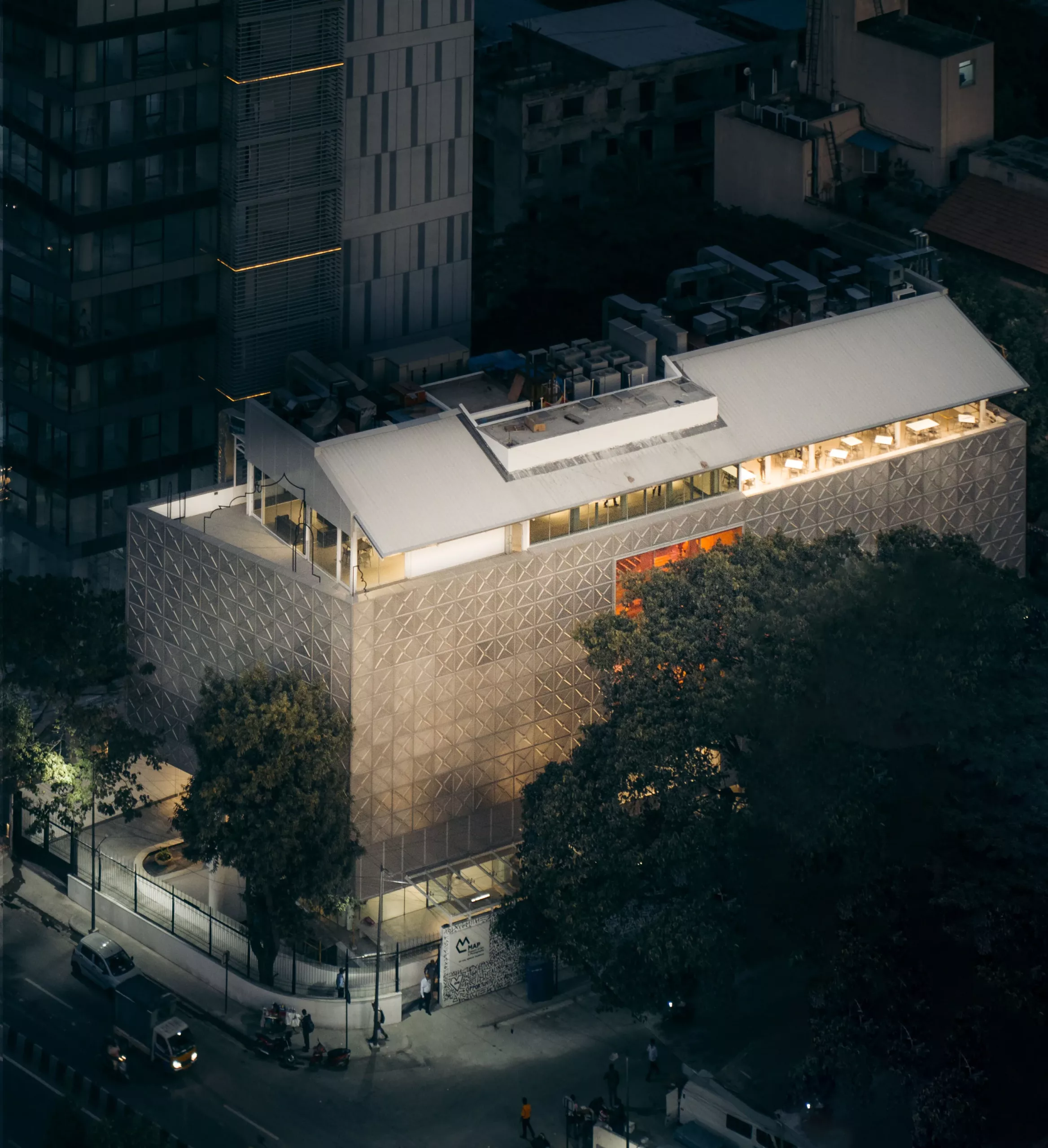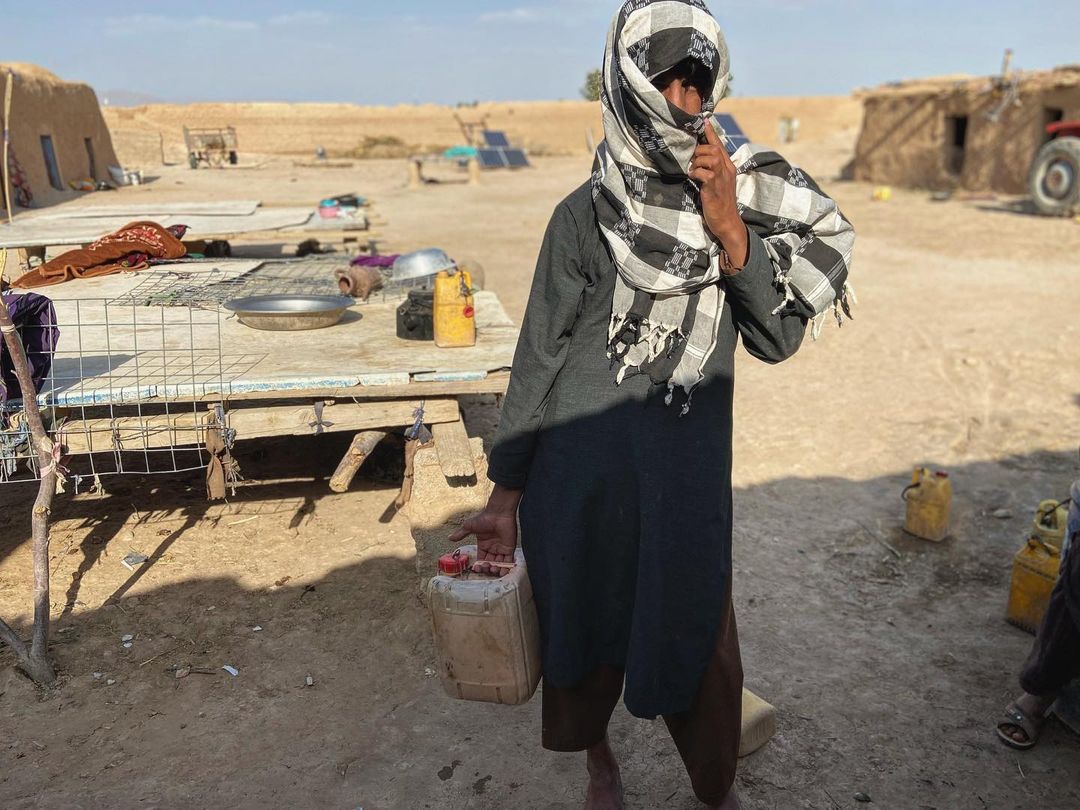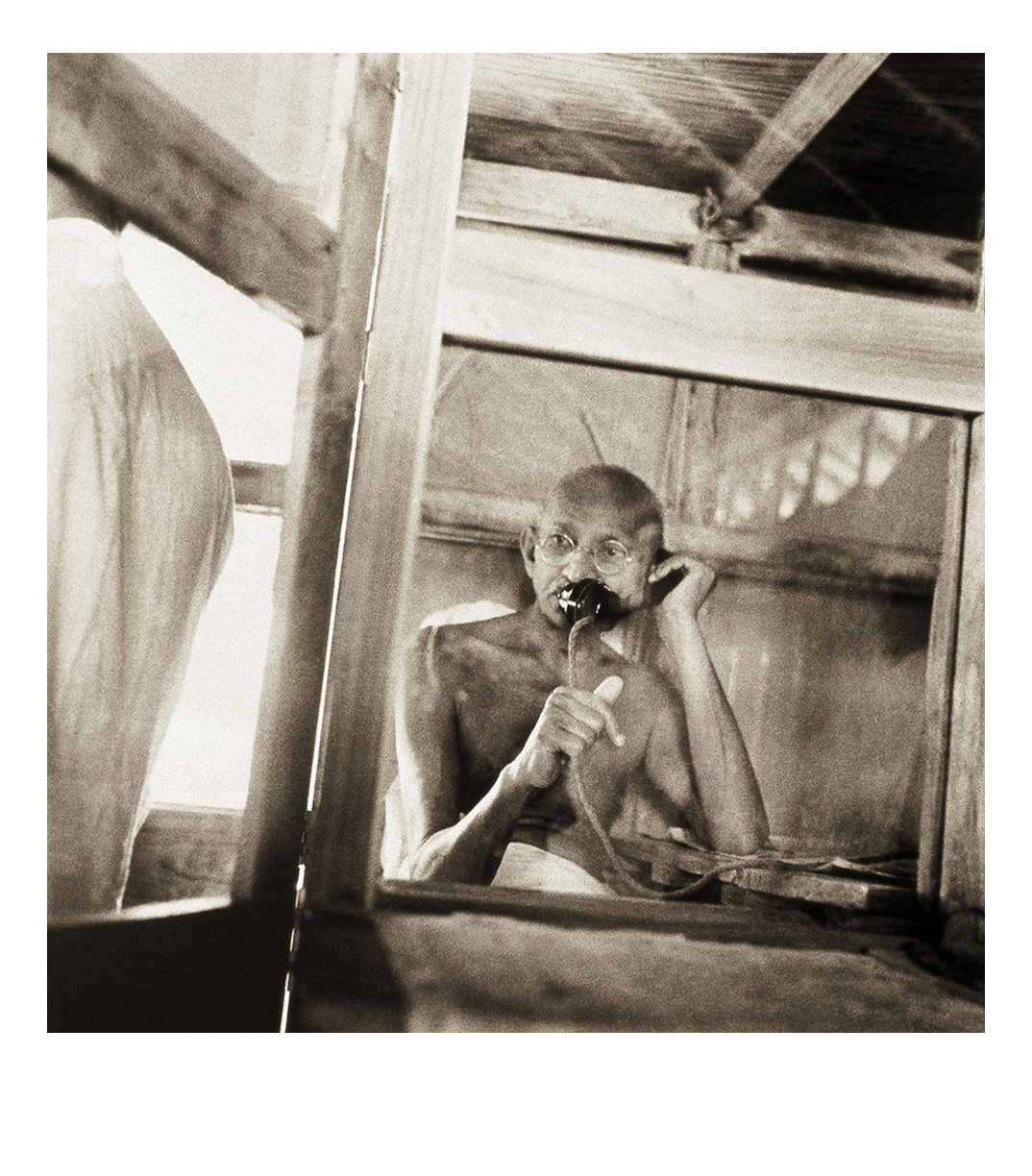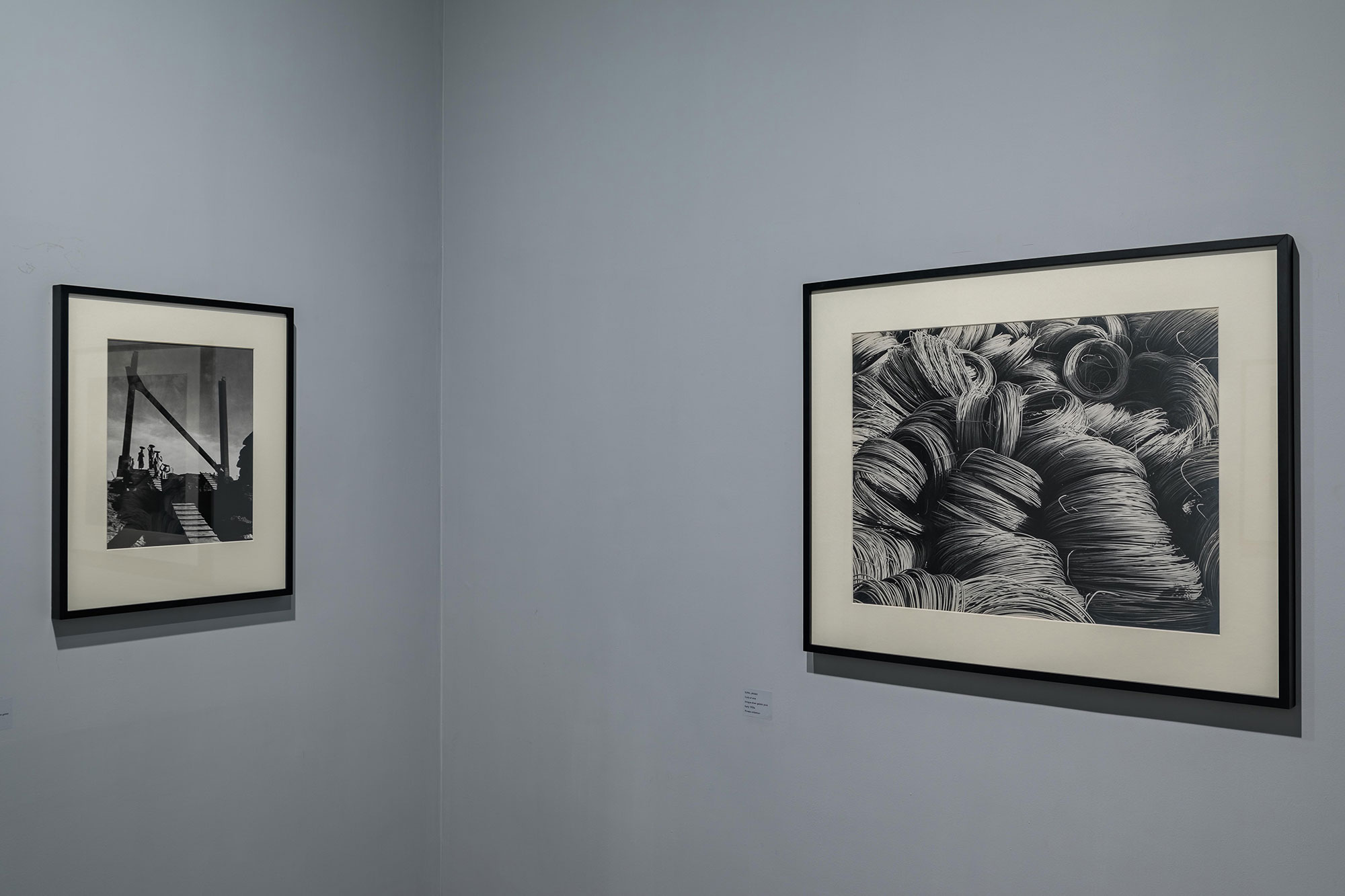
Show View: The Making of a Photograph, Feb 3 – Mar 26, 2022, Experimenter, Kolkatta
The making of a nation, through Sunil Janah’s eyes
Memories grow old, like a vintage photo print. Both get strange tints and tones in the laboratory of time. An aimless dive into the whirlpool of these old memories may produce a deep nostalgia within. Sometimes, a single photograph can do the same magic. This picture doesn’t necessarily need any personal moment attached to it. How is it possible that many of us feel nostalgic while looking at the same image, which is well beyond the realm of our personal memories? Is it because photographs carry bits and traces of a collective memory?
Benedict Anderson, in his highly influential book ‘Imagined Communities: Reflections on the origin and spread of nationalism’, published in 1983, speaks in length about the socio-material forces that shape the collective idea of a nation. Even though this idea is criticised from certain anti-colonial perspectives, it is worth mentioning here in the context of creation of collective memories on which many nation states owe their existence. Widely used as a medium of documenting events during colonial as well as post-colonial periods, photography could be playing a major part in shaping these memories.
The role of photography in recording events and their subsequent contribution to the making of history is well established. Till the advent of this medium in the early 19th century, recording of history mostly happened in textual format, while paintings supplemented the process upto an extent. It was the first half of the 20th century which made photography an essential part of history-making. The unimaginable miseries of people around the world during the two World Wars (1914-1918; 1939-1945), the Great Depression (1930s), Spanish flu outbreak (1918-1920) and the colonial oppressions in Asia and Africa (throughout the 20th century) are still remembered by many of us through the iconic images of those periods. India’s modern history, too, is replete with photographs that form an essential part of our understanding about the country’s struggle for independence, the Partition, and the making of a modern nation state.
When it comes to images created during the immediate decades preceding and succeeding India’s Independence from the British Raj, there are a handful of Indian photographers who come to mind, with Sunil Janah (1918-2012) on top of the list. Born in Assam, Janah spent his academic years in Calcutta, which at the time was India’s intellectual nerve centre. Drawn towards communist ideology, the young English student soon found friends among Leftist activists in the imperial city. Just an amateur photographer, Janah was noticed by the Communist Party of India’s then general secretary PC Joshi. This heralded a new chapter in the young man’s life. Encouraged by Joshi, Janah left his English studies and went on to record the gruesome Bengal famine which was ravaging the region in 1943. Since then, there has been no looking back for Janah. Further, his association with Life magazine photographer Margaret Bourke White, at the dawn of India’s blood-soaked Independence, made Janah one of the most recognised South Asian photographers on the world stage.
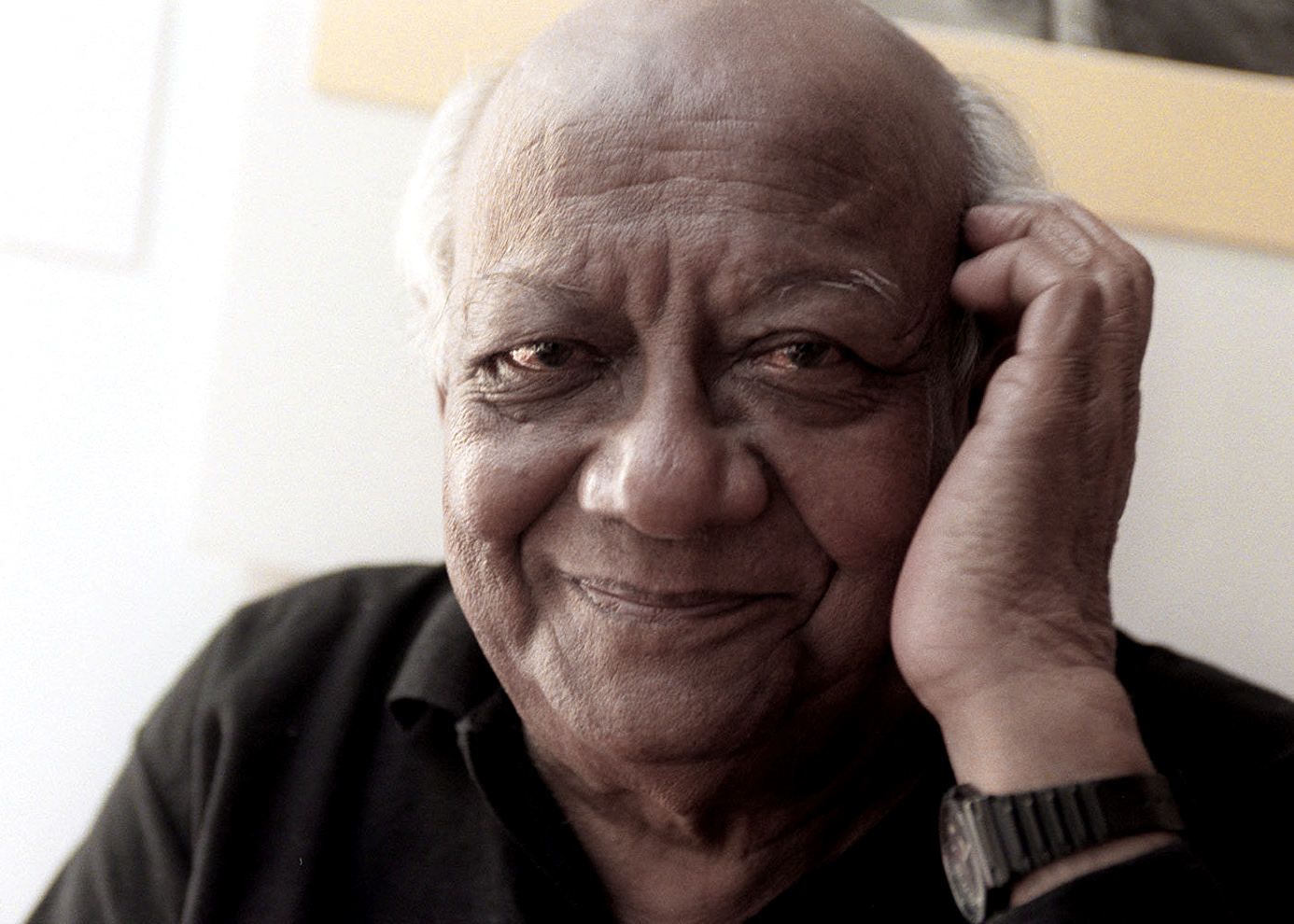
Sunil Janah © Suzanne DeChillo/The New York Times, 1998
Even though he is known in the outside world for documenting the tragedies of Bengal famine and the Partition, Janah has also created an extensive collection of images that showcases India’s tryst with modernism. These images are not as widely seen as his other works. According to Ram Rahman, the photographer, curator, designer and activist who has shed light on Janah’s wide swathe of works and curated them in the US, the latter’s images constitute the “defining epic document of the last decade of the freedom struggle and the first decade of free India”. A chronicler of Nehruvian times, Janah widely travelled across the country in the 1950s and 60s and documented construction of railways, roads, steel plants, dams and other infrastructure. Called ‘the temples of modern India’, these dams and power plants had instilled confidence in the citizens of the nascent republic. Janah’s photographs of this period — devoid of any shock-factor that often accompanied his earlier images of the famine and Partition — unmistakably add to the nation’s collective memory. His documentation of the making of the nation is once again in news as the Experimenter gallery is organising an exhibition of his photographs, curated by Ram Rahman, at Bollygunge Place, Kolkata from February 3 to March 26. A decade after Janah’s death, some of his less-seen works are being exhibited in the very city that made him a photographer.
According to organisers, the title of the exhibition — Making a Photograph — has been borrowed from celebrated American photographer Ansel Adams’ book of the same name. Adams’ works are known to have deeply influenced Janah into choosing the career path. While Adams is known for his breathtaking images of landscapes, Janah has mostly worked with men and machines. Despite this contrast, the title is apt in a certain way. The exhibition will be focussing on the industrial photographs taken by Janah. These images were captured at the steel plants in Bhilai and Rourkela, coal mines in Bihar, and ports, mills and factories in Bengal. In many of these photographs, the sheer size of metal and machines makes the human figures so small. They all look busy constructing something gigantic. It could be said that while Janah was making his photographs, the nation was busy building up itself. This is why his photographs form a crucial part of our modern history and collective memory. Back to the present, as we sail through the ‘post-truth world’, there are attempts from various quarters to erase certain memories and create new ones that suit the ruling dispensations’ requirements. India, too, is not an exception. There is already a political narrative in the work that aims to show that the country didn’t achieve or create anything until 2014. Janah’s images of India taking baby steps to modernity — more than 70 years ago — will remain a stumbling block to this narrative.
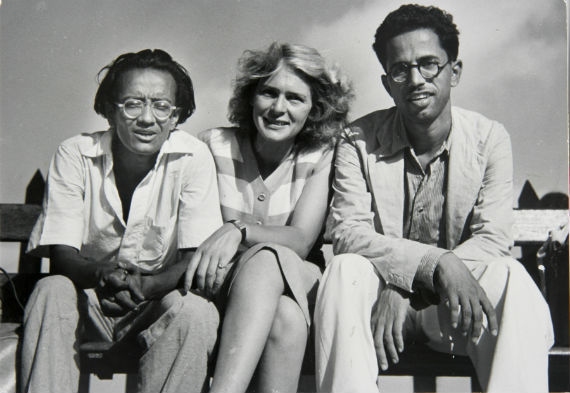
Sunil Janah, Margaret Bourke-White and Comrade Rangnekar, Bombay, 1945
Speaking to PhotoMail, Ram Rahman says Janah happened to be at the right spot at the right time by chance. First, with politics in the 1940s; second, the fight for freedom which he documented in an amazing way; third, photographing the artists, writers and dancers during the renaissance of culture that happened at the moment of Independence; then he photographed sculptors and temples which in a way was a discovery of our own art history. He also photographed tribals and communist party activities in this period. “At each stage of his photography career, Janah produced a huge body of work. Any one of these could be the whole work of a major photographer. But Janah had all these in his single life. He was careful about making fine prints of these pictures. His industrial pictures, though very straight, are graphic and well composed. And they are very beautifully printed. He was very particular about the quality of his prints. They were not casual pictures,” says Rahman.
Janah’s works are so big that they can only be seen on a massive scale, says Rahman. The ongoing show in Kolkata comprises only the industrial photographs which Janah produced at one period of his life. “When we look at the whole range of Janah’s works, it can be seen that he had different styles depending on what he was doing. His studio portraits and political pictures are very different from each other. The style of his industrial pictures are very different from all other works. Depending on the subject, he adopted different ways to photograph them.”
After Janah moved to the US in his later days, these prints were mostly forgotten. Rahman says it is by another coincidence that they landed in India as a collector managed to buy some of them. “The timing of the exhibition coincides with the 75th anniversary of Independence. At a time when the BJP is trying to demolish Nehru’s legacy and spreading the narrative of ‘Make In India’, Janah’s works assume significance as the ‘Make In India’ started in the 1950s. That is why it is so important that people see these pictures. We should not forget this history and the BJP is trying to make us forget it.” Apart from their historical significance, these are stunning images, says Rahman. “That was a time of great hope. Now, we have a different view about industries. We perceive industries as polluting, but at that time we needed all these factories because we needed indigenous manufacturing. Also, they provided jobs to lakhs of people, particularly in backward areas. There was a great positive energy which actually can be felt in Janah’s photographs.”
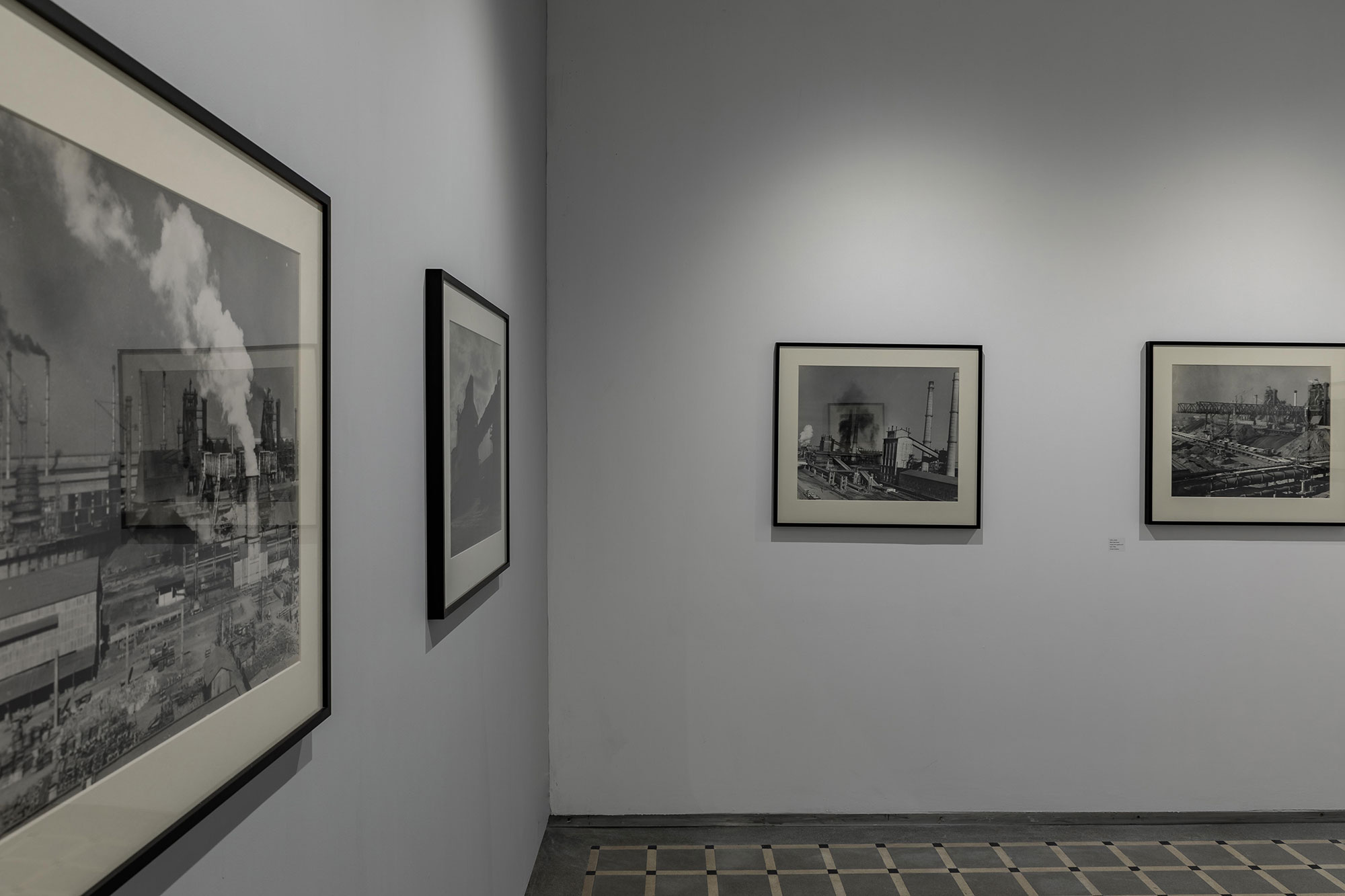
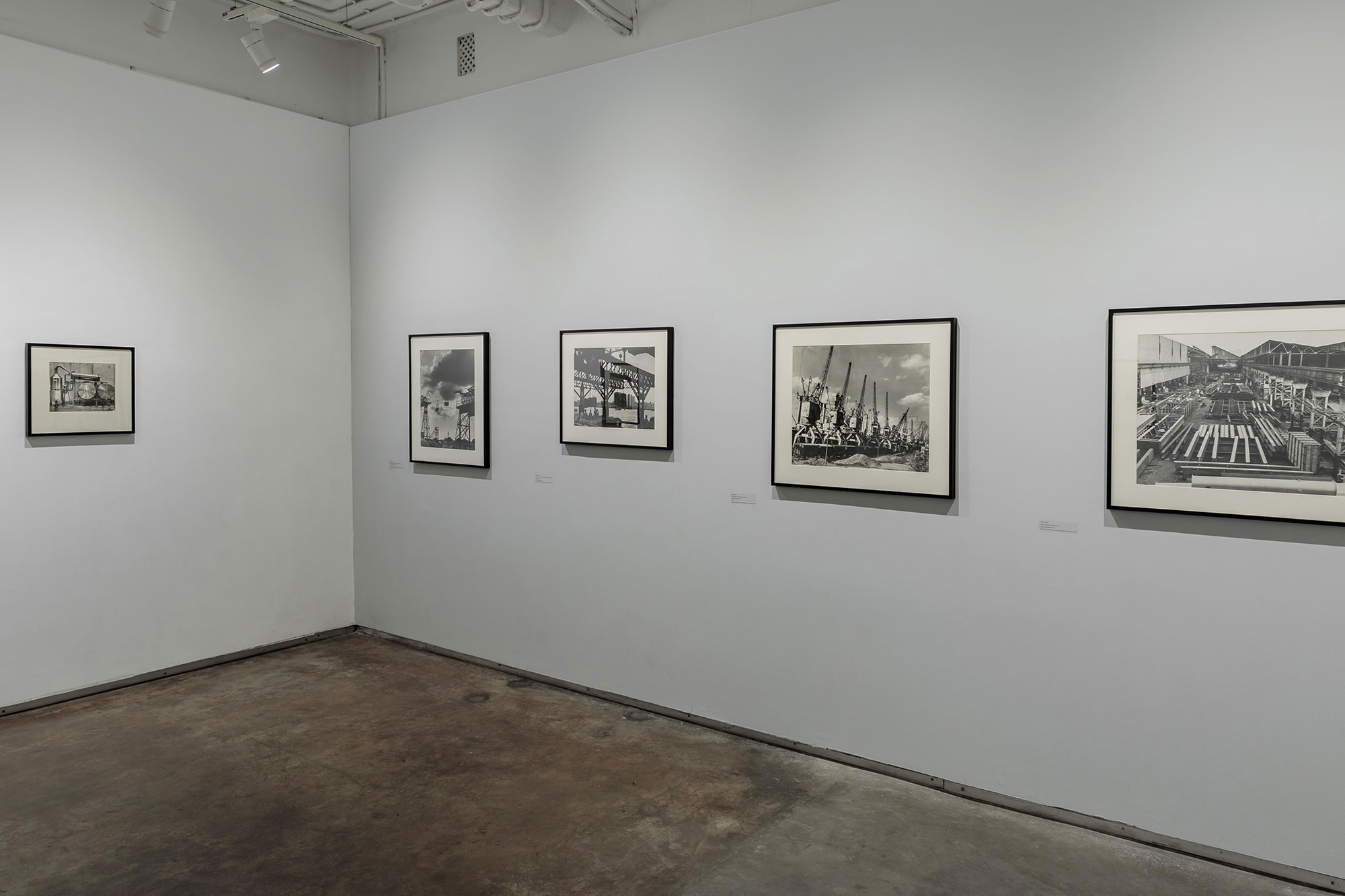
Show View: The Making of a Photograph, Feb 3 – Mar 26, 2022, Experimenter, Kolkatta
Without any disregard for Janah’s works, it will be prudent to examine some of the criticism his works have attracted. Janah’s photographs of the famine and the Partition got such international acclaim also because of the exoticism they carried. The inherent colonial gaze in many of his earlier works won’t be missed by the eyes of a modern critic. Such stereotyping could have been unavoidable at that time but it also set a template of how tragedies should be captured. In the circulated images, including that of Janah, of the Bengal famine, ‘…there is little evidence of the economic system, the Second World War, and the social circumstances that made such a brutal tragedy possible.’ [1] Janah later accused the colonial government of doing little to control the situation and prioritising the war efforts. Ironically, the communists in India were supportive of the Allies in the war against Hitler.
Also, it would be worth drawing a parallel between Janah and Punalur Rajan (1939-2020). Both held onto communist ideology till their last breath but travelled in two opposite directions. While Janah was capturing tragic moments and gigantic machines, Rajan was content with photographing his close friends — many of them tall figures in the field of politics, literature, art and cinema — and lighter moments. While Janah gained global acclaim, Rajan, despite receiving huge exposure from masters in the Soviet Union, including one of the greatest filmmakers of all-time Andrei Tarkovsky, chose to return to his homeland. This decision to narrow his circle and being regionally based, was probably the reason for not receiving the recognition he so deserved. What’s more troubling is the absence of Rajan’s photographs other than the ones that were published and thus received public recognition. Will those unseen treasures be found or not in the course of time remains unknown for now [2]. During an interview with PhotoMail, Rajan had said that not getting a chance to meet Janah remained a regret in his life [3]. The veteran Kerala photographer went on to say that he was impressed by the fact that an Indian photographer had done such an outstanding work. On the criticism that Janah could establish himself by using his connections with the Communist Party of India, Rajan strongly defended the former saying that his association with the party might have helped him meet eminent photographers from the West but they wouldn’t even have considered him if his works were not of requisite quality. Rajan had high regard for Janah and stated that “his name will be up there with the legends when the history of Indian photography is written”.
In a way, Janah was privileged for having received global attention at a very early stage in his career. His association with Western photographers helped him ascent the ladder quickly. Probably, he was at the right place at the right time with the right people. Fame, however, didn’t help Janah make any big financial gains, and his works were extensively used without remuneration or credit. Many of his photographs are yet to reach a wider viewership in the country and the Making a Photograph is one step in this direction. And there is no better time for it than now.
_______
Notes
[1] Indian Photography’s (Conceptual) Poverty and Reality, Ruminations about Alessio Mamo’s Dreaming Food photo project, August 2018, PhotoMail [2] Remembering Punalur Rajan by Abul Kalam Azad, November 2020, PhotoMail [3] Interview with Punalur Rajan, October 2017, PhotoMail
By Joyel K Pious Published on September 19, 2021 | Read more Articles by Joyel here
Share
Related News
The Historian’s Question: Where exactly is the ‘British’ Museum?
In an era of global connectivity and cultural awakening, the question of who truly owns our shared heritage has never been more pertinent. From the hallowed halls of the British Museum to the digital archives of the innovative Museum of Looted Antiquities, a revolution in cultural repatriation is quietly unfolding. This essay takes readers on a journey from a thought-provoking conversation with renowned Indian historian K.N. Panikkar to the cutting-edge efforts of online platforms documenting the return of stolen artifacts. As we explore the complex web of acquisition, smuggling, and repatriation, we uncover not just the stories of priceless objects, but also the evolving narrative of how we perceive and preserve our global cultural legacy. In a world where the lines between preservation and appropriation blur, this exploration challenges us to reconsider the role of museums and the true meaning of cultural stewardship in the 21st century.
PCCR’s Fourth Batch of Online Certificate Course on Arts Appreciation Kicks Off September 15
The Pragjyotish Centre for Cultural Research (PCCR), a distinguished institution known for its commitment to the study and promotion of cultural heritage and artistic traditions, has announced the launch of its fourth batch of the Online Short-Term Certificate Course on 'Arts Appreciation'.
New Fellowships Announced to Boost South Asian Textile Research and Education
The MAP Academy and Nalli Silks have announced new Fellowships to support projects focused on South Asian textile traditions. With grants of up to INR 5,50,000, these Fellowships aim to explore textile production, design, and cultural significance in the region. Applications are open for 2024–25, inviting proposals that will enhance research and education in South Asia's rich textile heritage.
AI Debate Takes a Full Circle
Artificial Intelligence continues to stir debates in art and technology. Recently, Bolivian photographer Miles Astray won a competition for AI-generated images with a photo he shot, fooling the judges with its surreal quality. This incident underscores the ongoing discussions about the ethical and philosophical implications of AI in creative fields, highlighting both its potential and its challenges. The debate around AI and human creativity has indeed come full circle, questioning the boundaries between machine and human artistry.
A new venue for art lovers: MAP, Bangalore is open for public
The newly opened Museum of Art & Photography (MAP) in Bengaluru welcomed its first visitors in Feb, offering a glimpse of around 60,000 works that would refresh the subcontinent's rich art history.
Plumbing the depths of space and time, James Webb Space Telescope
The James Webb Space Telescope has been designed to see the infrared part of the spectrum, making it capable of glimpsing “galaxies far far away”. This provides access to a part of the spectrum that no telescope has had till date, not even the iconic Hubble Telescope, which can see ultraviolet and visible light.
Snapshots from a forgotten land
Photojournalist Kanika Gupta takes a more personal approach on her page. The Indian journalist, who had to be evacuated from Afghanistan when the Taliban first took over, has since returned, and has resumed her efforts of documenting the country. On her Instagram handle, lifeoutside2by2, she fearlessly interviews and photographs Taliban soldiers, bringing out both the cruelty and humanity in their stories. A snapshot of a man who has been taught to believe that “making landmines is holier than fighting" is juxtaposed with one of two friends - one of whom used to be in the National Army and the other, a hardened Taliban, who joined when an American drone strike killed seven of his family members on a single day. Today, the two friends, who have both joined the regime, reminisce about having fought on different sides.
MAP’s Director’s Cut: Reimagining and Reinventing Museums
This episode (Wednesday, 9th March, 6:30 pm) of MAP’s series Director’s Cut features Nadine Wietlisbach, Director of Fotomuseum Winterthur in Switzerland.
The making of a nation, through Sunil Janah’s eyes
After Sunil Janah moved to the US in his later days, these prints were mostly forgotten. Rahman says it is by another coincidence that they landed in India as a collector managed to buy some of them. “The timing of the exhibition coincides with the 75th anniversary of Independence. At a time when the BJP is trying to demolish Nehru’s legacy and spreading the narrative of ‘Make In India’, Janah’s works assume significance as the ‘Make In India’ started in the 1950s. That is why it is so important that people see these pictures. We should not forget this history and the BJP is trying to make us forget it.” Apart from their historical significance, these are stunning images, says Rahman. “That was a time of great hope. Now, we have a different view about industries. We perceive industries as polluting, but at that time we needed all these factories because we needed indigenous manufacturing. Also, they provided jobs to lakhs of people, particularly in backward areas. There was a great positive energy which actually can be felt in Janah’s photographs.”
Celebrating Resistance, 152 years of Mahatma Gandhi
On Gandhi's 152nd anniversary, PhotoMail remembers him through these everlasting imageries. There are hundreds of photographs of Gandhi, often the author is unknown. Here is a collection of photographs by known Indian and International photographers.






